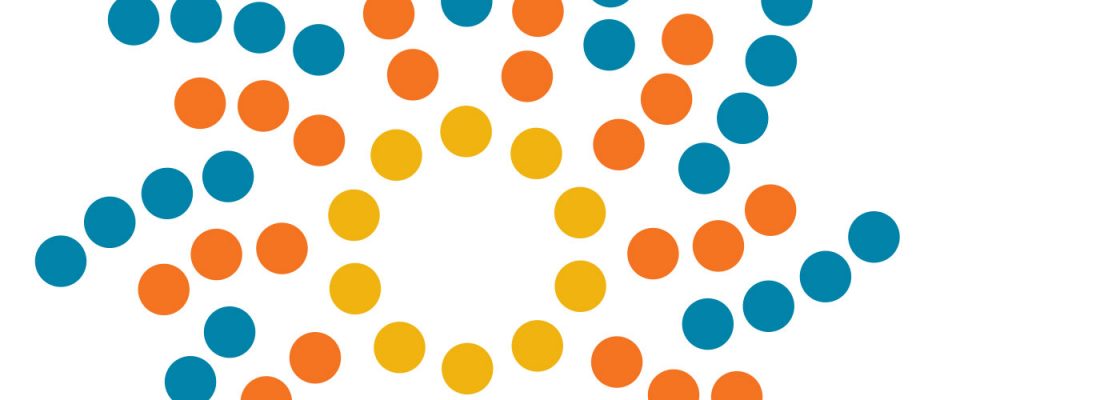Last week we held one of our most exciting events of the year: our Safety Net Innovation Network meeting. This convening was particularly special, because we joined forces with the Innovation Learning Network (ILN) to celebrate their 10th birthday with a joint meeting of commercial and safety net innovators.
Because of the event’s limited size and the incredible interest we received, we promised to share the biggest insights our team had coming out of the meeting’s huge selection of sessions. So below are our top 12 “SNINsights.”
1. Discovery vs. Invention vs. Innovation
There is a difference between discovery, invention and innovation, and the latter requires a different kind of openness than the others. This was the main theme of the meeting’s first keynote talk by Saul Kaplan, Founder and Chief Catalyst at Business Innovation Factory. Saul explored how all innovations start with inventions, but not all inventions become innovations. Instead, innovation is about finding a better way to deliver value. If you aren’t delivering value, it’s not truly an innovation—it’s just churn.
2. Don’t Get Netflixed
But more importantly, if we are to continue to add value and stay relevant, we have to be able to reinvent ourselves. We have seen too many examples of organizations stuck with their original business model and found themselves losing huge empires. Blockbuster didn’t change it’s tune when Netflix shook things up with their mail-order DVD rentals, but Netflix did evolve when streaming technology began to make DVDs obsolete. Don’t be like Blockbuster—be open to new business models like Netflix.
3. Saul’s Top Ten Reasons Why Businesses Fail to Transform
Our first keynote also gave us a handy list to explain just why so many Blockbusters get Netflixed:
- CEO’s would rather tweak what they know works.
- Business model innovation will be the next CEO’s problem.
- People believe that product (or service) is king, and nothing else matters.
- Orgs focus only on keeping the trains moving and lowering costs.
- Cannibalization is off the table.
- Nowhere near enough connection with the unusual suspects.
- Line executives hold your paycard; talent systems (like HR departments) are not set up to support innovation.
- “Great idea, but where’s the ROI?” This is the wrong set of metrics.
- “They shoot business model innovators, don’t they?”
- “You want to experiment in the real world?! Crazy!”
4. What’s the Point if We Can’t Have Fun?
Because this event was in part celebrating the ten-year anniversary of the founding of the ILN, the theme for the meeting was “celebrating everything innovation.” In the spirit of this joyful approach, we had a number of sessions that used games and improvisational exercises. These ranged from a whole track on using the power of physicality and movement to inspire, engage and brainstorm, to an impromptu dance party in the middle of our second day.
Casual dress was encouraged, and the first thing folks did when they arrived was decorate wooden name badges with paint and stickers. ILN styled the event to recall life as an 10-year-old at summer camp, hoping to put participants into that same creative, collaborative openness that children can attain so easily.
5. Go Beyond the Boring Meeting
But there was a reason to toss the stiff conference standards in favor of wood badges and Segway races: the usual ways of running meetings are too often ineffective because they we don’t engage participants to creatively explore and solve problems together. By getting staff out of their chairs and introducing improvisational games and team-based idea generation, we can get more high quality ideas, inspire creative thinking and make work more fun.
We can also use new liberating structures for idea generation that can involve all staff (even the introverts). The 1-2-4-All technique is one example: participants develop ideas alone before sharing in pairs, and then in progressively larger groups. This helps to bring out ideas from everyone and gets staff engaged and invested in the solutions these meetings develop.
6. Lean and Innovation
We often field questions from people who are trying to figure out how to integrate some of the techniques we advocate into organizations with established decision-making strategies. Our friend Lynne Maguire from Columbus Regional Health led a session on integrating LEAN and innovation. The big takeaway for us was that Design Thinking is an approach that can complement LEAN and Six Sigma. Innovation doesn’t have to have its own department.
Instead of worrying about whether a project is “improvement” or “innovation,” spend more time thinking about what the project needs and how different skills can move it along. Use a project intake process to determine whether the solution requires incremental change or more transformational change. Lean Six Sigma’s impact on the bottom line is faster and easier to deliver than innovation. But innovation is required for true transformation and big leaps.
7. Leadership & Teams
This meeting reinforced some of what we already believe about the importance of good leadership and robust teams in driving innovation and transformation. Focus on these elements helps build a culture of collaboration and improves the team to be able to deliver higher quality and more effective care.
Part of this means acknowledging how hard it is to build great teams and the trust and joint accountability that come with them. Involving teams in problem solving and outlining solutions is critical. Human centered design approaches can be effective to involve all levels of the care team.
Creating a physical space for innovation activities helps to signal organizational commitment to innovation, helps with recruitment and retention, and creates a better work environment by allowing teams to get out of the day-to-day
8. Movement-Based Problem Solving
Movement-based problem solving is a way to build empathy and spot friction points through a combination of role-playing and using physical movements to illustrate working relationships. A session on this method with Robin Zander of Design for Dance and Todd Elkin of UCSF was one part of the “movement track” that ran throughout the whole meeting.
In that session we worked to simulate the relationship between a CEO, an engineer, and the project manager who serves as an intermediary by having participants toss a ball back and forth across the room while handling a variety of coordination obstacles and life distractions. The engineer had too many balls to hold at once. The CEO was randomly called away to deal with the parking tickets on his Tesla. The manager had to circle around to different stations and could only occasionally find time to facilitate between the other two. You do this for a while, add new twists to better illustrate reality, and then you switch roles.
This activity helped the players, and observers who stood nearby to empathize with different roles, see the complications that everyone was dealing with, and maybe spot ways to improve frayed situations by investing in more help or taking the time for more direct communication.
9. Creating Killer Experiments
The number one reason health innovations fail: insufficient market demand! So do your homework and talk to end users to make sure you are actually meeting a need.
CRAASH is a commercial accelerator for healthcare innovations.
This was the message of the “CRAASHing into Successful Innovation Commercialization” session by Mike Dempsey of CIMIT/Mass General Hospital. CRAASH is a commercial accelerator for healthcare innovations that focuses on doing market research on the economic buyer, which in healthcare is not always the patient. Which can make the research and de-risking process tricky. During CRAASH, CEOs help innovators design “Killer Experiments” that find out what is the minimum amount of work required to discover that an innovation is NOT going to work.
10. MaRS Is Coming to a Planet You
In Canada, MaRS EXCITE is working with health tech vendors and government agencies to expedite the process of health innovation evaluation and adoption, so that innovations can be brought to scale on a much quicker timeline.
And as we learned from their session on creating a shared “pull model” for proven innovations, MaRS EXCITE International is coming to a country near you! They have started to work with the FDA and CMS to adapt their model to the US market.
11. What’s Your Design Maturity?
You might know some design principles, but actually making them a part of how you work is a different story. Rob Girling is a design veteran with the Artefact Group, which has created a design maturity survey. The survey is designed to test exactly how well-integrated design principles are into an organization.
According to Rob, Design Maturity of an organization is based on 5 pillars:
- Empathy: The maturity of the organization’s understanding of its customers.
- Mastery: The quality of execution in design thinking and crafting.
- Character: The organizational support for design, design thinking and integration of professional designers.
- Performance: The market’s response to an organization’s design output.
- Impact: An organization’s actions around its cultural, social and environmental legacy.
12. Framestorming!
Framestorming is a design technique that has been getting quite a bit of buzz lately, so it was great to have a session on this topic early in the event. Framestorming is about developing a framework that helps you to dissect a problem and visualize the space where you can find a solution. The phases of framestorming are:
- See and experience the issue
- Question and reframe the problem
- Imagine and model
- Dimension and Diagram the solution space
- Test and shape the solution
- Pitch and commit
The workshop focused in particular on the “dimension and diagram” phase. Dimensioning helps you to identify and structure the problem. It’s the hardest part of framework development, and typically the part that takes the longest. Diagramming, meanwhile, reveals relationships among the problem dimensions—categories of the factors influencing the problem and solution. This process uses visuals to help us more deeply understand and see these relationships. Building frameworks breaks down the problem space into factors such as beliefs, values and activities. The 2×2 matrix and the Venn diagram most common type of framework…but there are many others.
Find this useful or interesting? We’re constantly sharing stuff like this. Sign up to receive our newsletter to stay in the loop.


